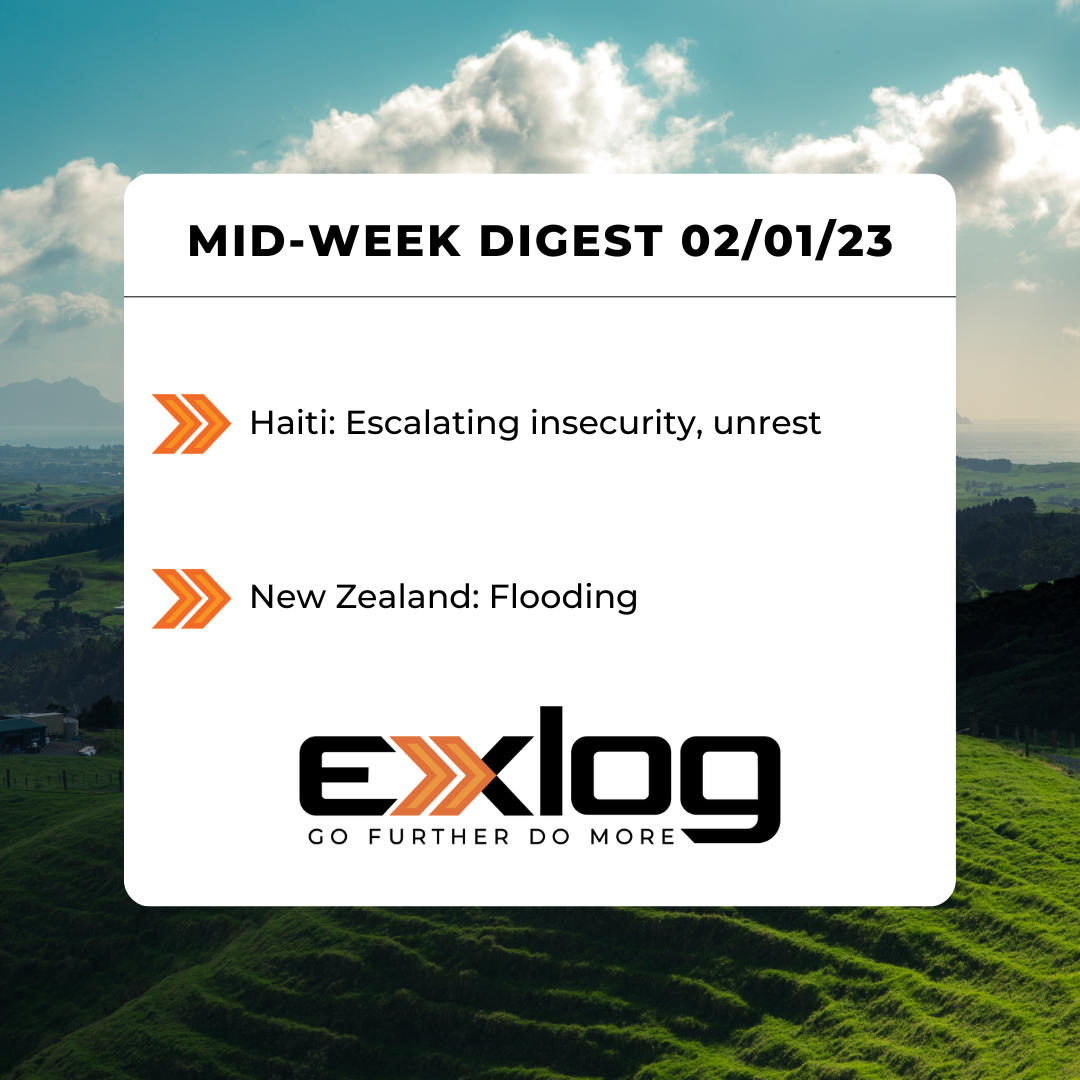Escalating insecurity, unrest in Haiti and flooding in northern New Zealand
Haiti: Gang Violence against police officers triggers disruptive protests
The security environment in Haiti has further deteriorated in the past two weeks following several gang attacks targeting the Haitian National Police in different parts of the country that triggered anti-government protests in Port-au-Prince and smaller northern cities. Civilian demonstrators, in addition to former and active police officers, took to the streets on Jan. 26 following a shootout between the police and the Gran Grif gang in the city of Liancourt, Artibonite department, that killed six officers on Jan. 25. While no known organization claimed responsibility for planning and leading the demonstrations, members of Fantom 509 – an armed group comprising of former and active police officers – participated in the rallies. Protesters blocked streets and highways with burning objects and large vehicles and fired into the air, forcing closures of numerous local businesses and interrupting public transportation services in several areas of Port-au-Prince. A group of protesters attacked the residence of Prime Minister Ariel Henry and stormed Toussaint Louverture International Airport (PAP) with the stated intent to locate the Prime Minister who was arriving from Argentina at the time of the incident. Despite short-term disruptions and property damage caused by the rally, the airport continued normal operations. Gang violence targeting both civilians and security forces has surged since the assassination of President Jovenel Moïse in July 2021. According to UN estimates, gangs control approximately 60% of Port-au-Prince, and the capital houses nearly half of the 200 gangs estimated to be operating across Haiti. In addition to widespread kidnappings, incidents of sexual assault, and homicides, gangs are also responsible for limiting access to critical infrastructure and hampering the distribution of vital humanitarian aid, which has triggered fuel shortages and a sharp increase in cholera cases. In response to escalating gang violence, Prime Minister Henry has requested international military aid, but no country has committed to a troop deployment to Haiti, although Canada delivered armored vehicles on Jan. 11 and imposed sanctions on anyone suspected to have ties to gang operations in Haiti. As of Feb. 1, no ongoing demonstrations have been reported in the country; however, further civil unrest – likely affecting businesses and complicating the already challenging operational environment – is expected in the short-to-medium term, particularly in Port-au-Prince and its metropolitan area.
New Zealand: Flooding, landslides impact northern regions
Further infrastructure and private property damage are likely in Auckland and nearby areas as heavy rains and subsequent flooding are forecast to continue in the northernmost region of New Zealand through at least Feb. 3. On Jan. 27, the Auckland and Northland regions, as well as the Waitomo district of the Waikato region, invoked a state of emergency as record-setting rain triggered flooding and landslides. According to New Zealand’s meteorological service, Auckland has experienced the most destruction after receiving 258 mm of rain on Jan. 27 – over 30 mm more than the region’s average summer rainfall (254 mm). Flooding and landslides over the last five days have killed four people and displaced more than 350 others. In addition, the weather has caused extensive damage to private property, with over 318 properties damaged and another 77 homes deemed uninhabitable. Total damage to travel infrastructure has yet to be determined, but reports from Auckland Emergency Management and the media indicate that many local roads and interprovincial highways throughout the region remain closed. Inclement weather also continues to impact air travel to and from the area. Auckland’s domestic and international airports are reporting weather-related disruptions and flight delays, and Air New Zealand has rebooked nearly 8,000 passengers as of Jan. 31. As of Feb. 1, Waitomo District has lifted its state of emergency, but heavy rain warnings have been placed for the Bay of Plenty and the Coromandel Peninsula between 1200 on Feb. 2 until 0600 on Feb. 3. MetService forecasts an additional 12-24 hours of rainfall through Feb. 3, or roughly 120 mm, and local officials have reiterated that the region is still vulnerable to flooding and landslides. As of Jan. 31, there are no reports of large-scale recovery operations taking place, though Auckland Emergency Management has opened three civil defense centers to provide assistance to those displaced by the storm. The cost of damage sustained in the region is currently estimated at more than NZ$97 million (USD 63 million), and the recovery process could add inflationary pressure to New Zealand’s economy. Recovery operations to clear roads and fully appraise infrastructure and property damage are likely to begin on Feb. 3-4, after the rains subside in the most heavily affected areas.


